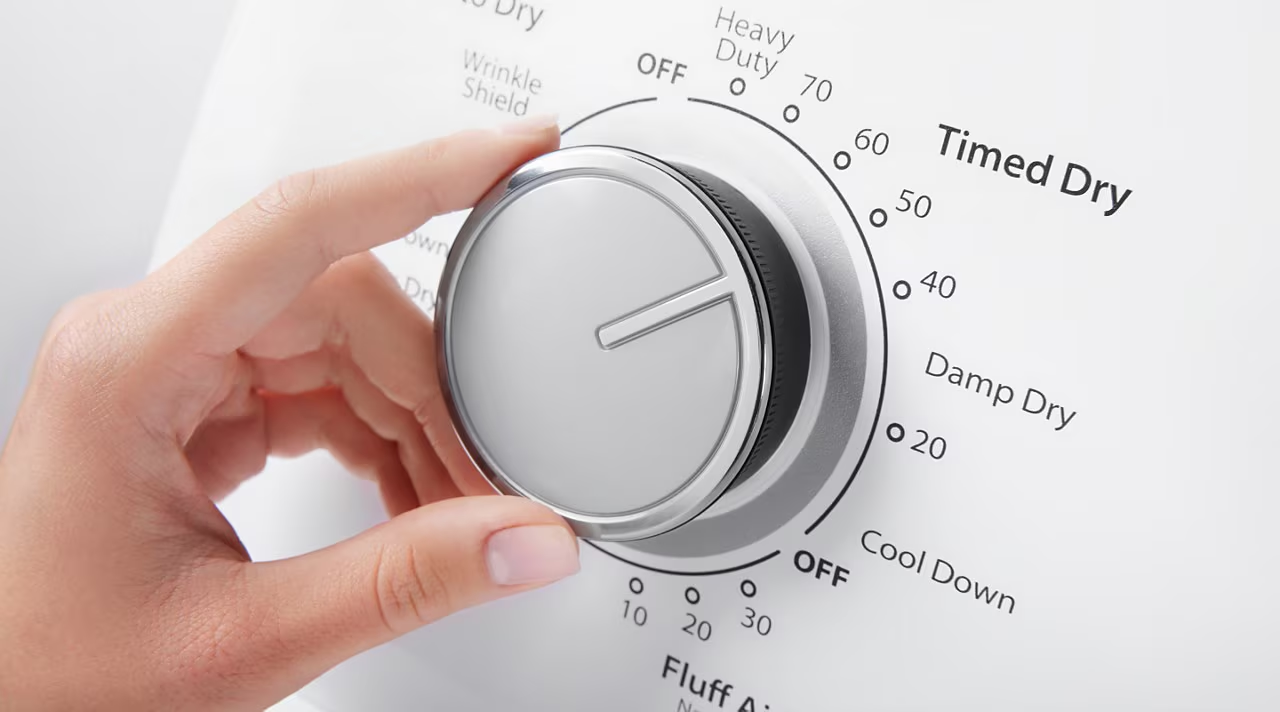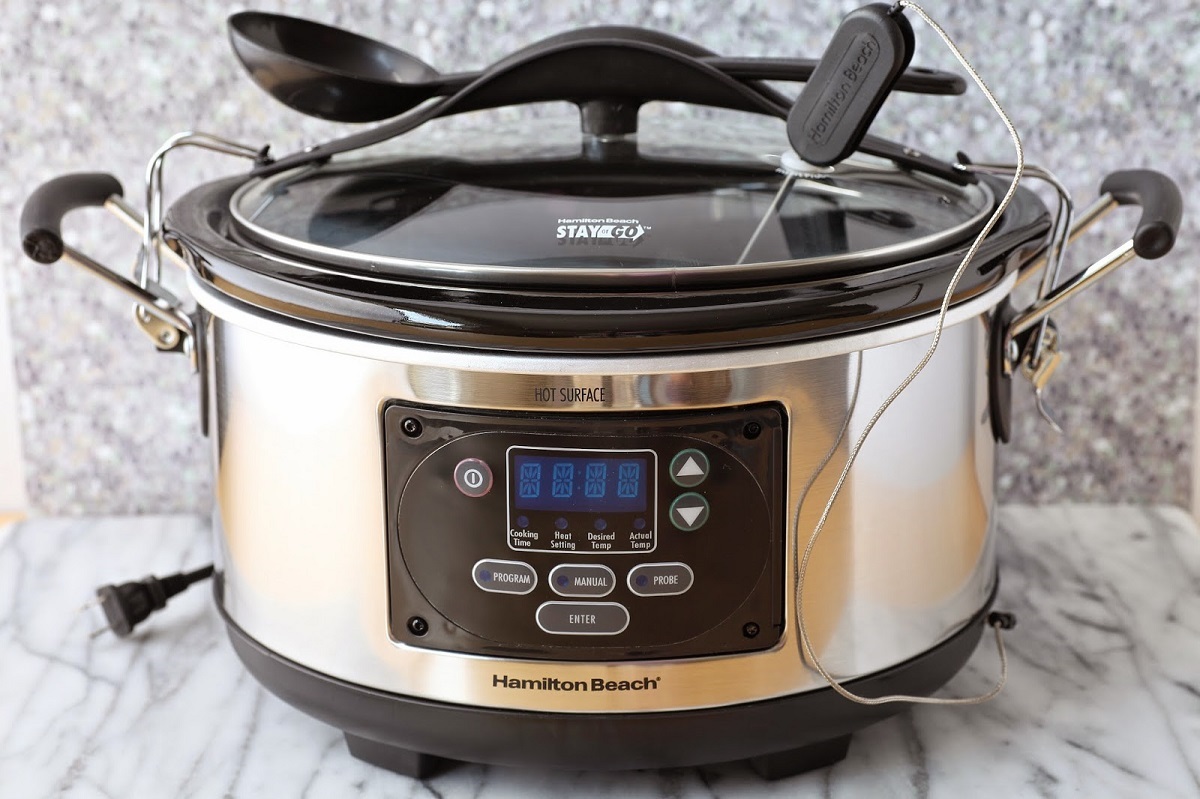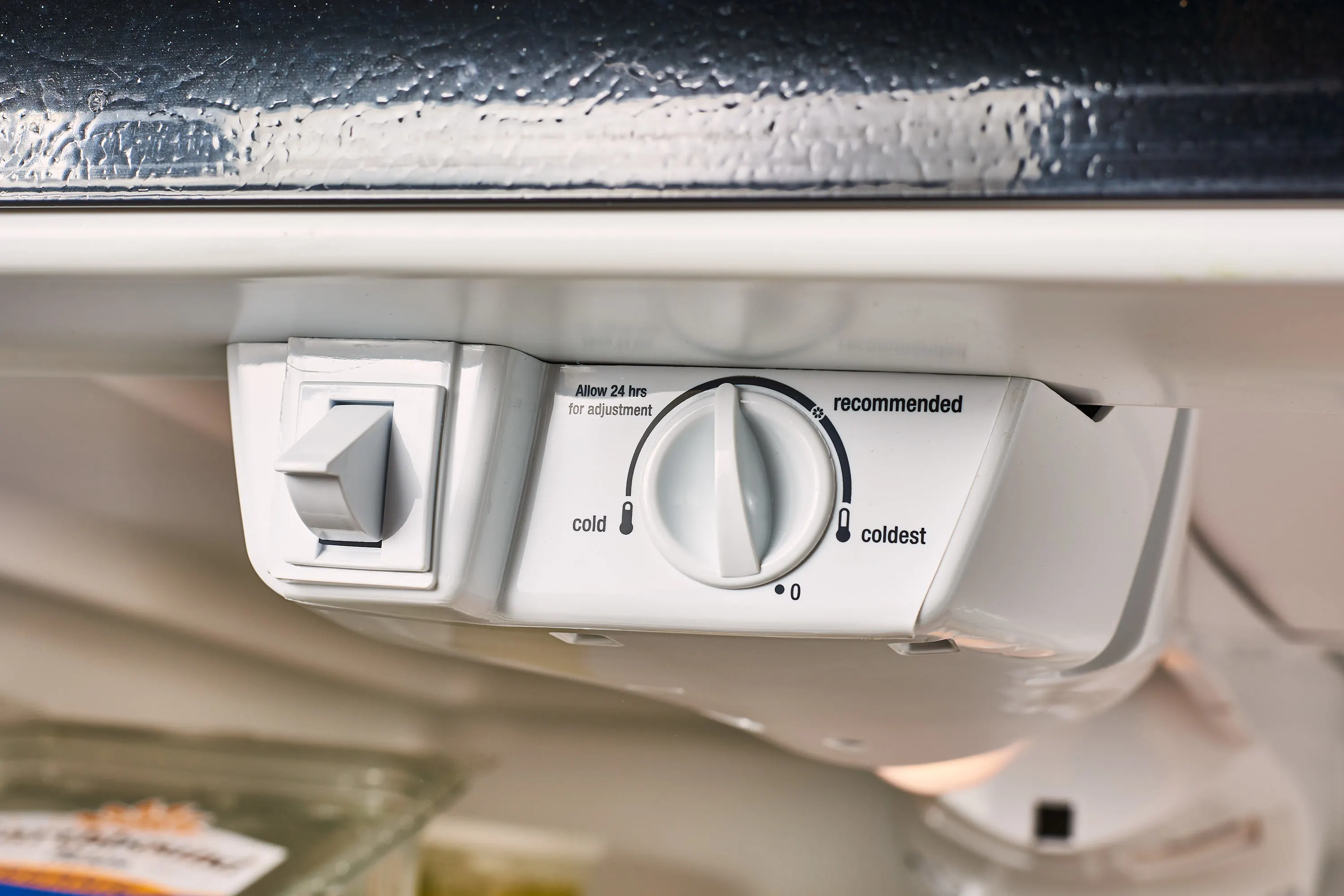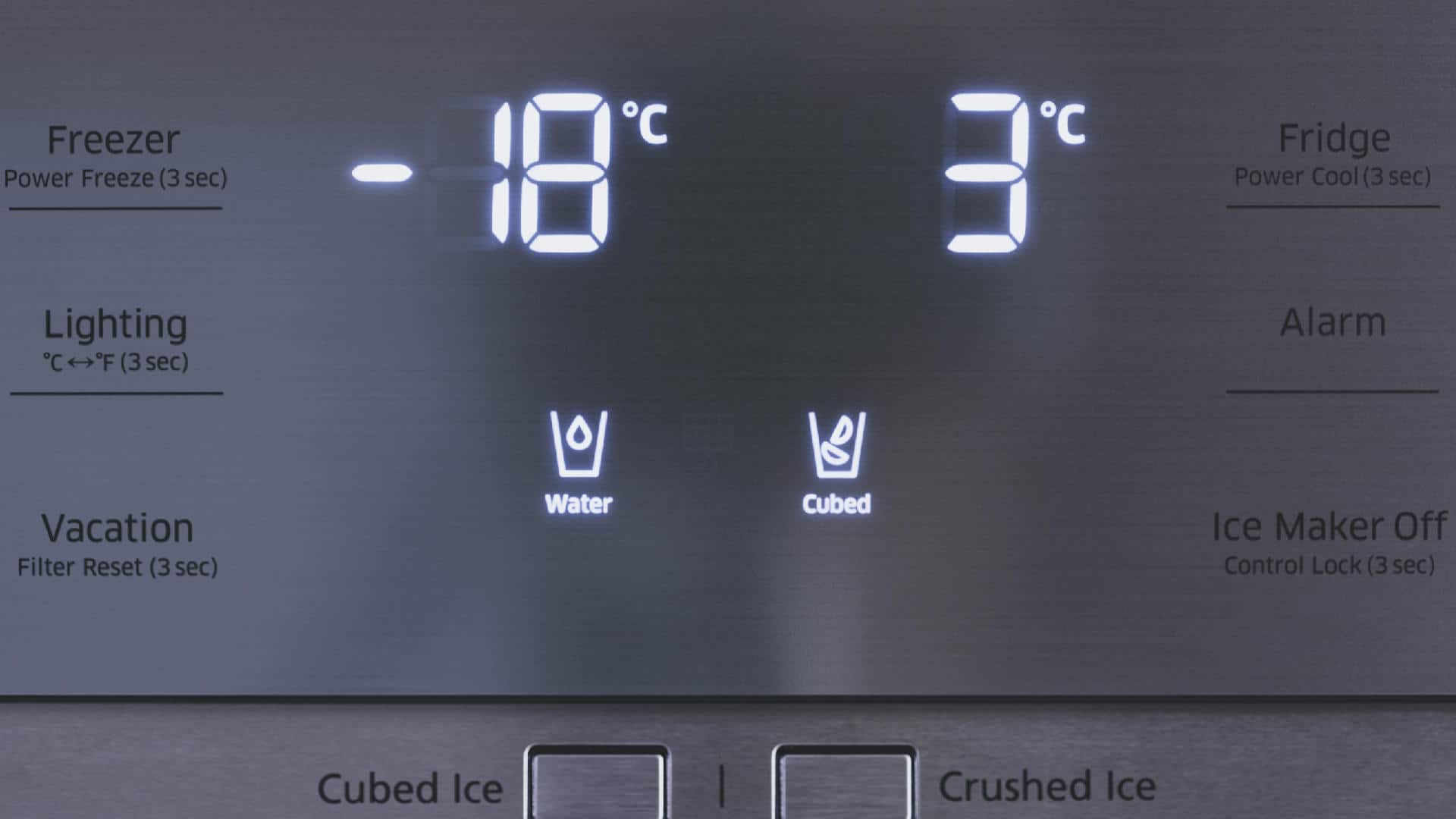Home>Home, Lifestyle & DIY>Understanding The Different Washer Temperature Settings


Home, Lifestyle & DIY
Understanding The Different Washer Temperature Settings
Published: February 21, 2024
Learn how to optimize your washer temperature settings for better laundry results with our comprehensive guide. Perfect for home, lifestyle, and DIY enthusiasts.
(Many of the links in this article redirect to a specific reviewed product. Your purchase of these products through affiliate links helps to generate commission for Temperatures.com, at no extra cost. Learn more)
Table of Contents
Introduction
Washer temperature settings play a crucial role in the laundry process, impacting the cleanliness and longevity of our clothes. Understanding the different temperature options and when to use them can significantly improve the effectiveness of our laundry routine. Whether you're dealing with tough stains, delicate fabrics, or everyday laundry, selecting the appropriate temperature setting can make a notable difference in the outcome.
By delving into the specifics of each temperature setting, we can uncover the optimal conditions for various types of laundry loads. From the energy-efficient cold water setting to the robust hot water setting, each option serves a distinct purpose in achieving clean and fresh-smelling clothes. Additionally, the delicate or hand wash setting and the pre-soak setting offer specialized care for more sensitive garments and heavily soiled items, respectively.
In this comprehensive guide, we will explore the significance of washer temperature settings and provide insights into when to utilize each option. By the end of this article, you will have a deeper understanding of how to maximize the effectiveness of your washing machine, ensuring that your clothes receive the care they deserve. Let's embark on this journey to unravel the mysteries of washer temperature settings and revolutionize the way we approach laundry.
The Importance of Washer Temperature Settings
The washer temperature settings are not merely arbitrary options on a washing machine; they hold significant importance in the laundry process. The temperature at which we wash our clothes can impact the cleanliness, stain removal, and overall garment care. Understanding the role of each temperature setting is essential for optimizing the washing process and ensuring that our clothes receive the appropriate treatment.
The choice of temperature setting directly influences the effectiveness of the detergent and the removal of stains and odors. For instance, hot water is more effective in dissolving detergent and eliminating tough stains and germs, making it ideal for heavily soiled items and bedding. On the other hand, cold water is gentler on fabrics and is suitable for delicate garments that are prone to shrinking or fading.
Moreover, the temperature setting affects the energy efficiency of the washing process. Using cold water reduces energy consumption, making it an eco-friendly option that also helps preserve the colors and integrity of the clothes. This aligns with the growing emphasis on sustainable practices and energy conservation in modern households.
In addition to cleaning efficacy and energy efficiency, the choice of temperature setting also impacts the longevity of our clothes. Washing clothes in excessively hot water can cause certain fabrics to deteriorate faster, leading to shrinkage, color fading, and reduced durability. By selecting the appropriate temperature setting, we can extend the lifespan of our garments and maintain their pristine condition for a longer period.
Furthermore, understanding the significance of washer temperature settings empowers us to tailor the laundry process to the specific needs of different fabrics and laundry loads. Whether it's a set of heavily soiled work clothes, delicate lingerie, or everyday garments, having a nuanced understanding of temperature settings allows us to provide the most suitable care for each item.
In essence, the importance of washer temperature settings cannot be overstated. It encompasses various aspects of laundry care, including cleaning efficacy, energy efficiency, fabric preservation, and tailored garment care. By recognizing the impact of temperature settings, we can elevate our laundry routine, ensuring that our clothes receive the optimal treatment they deserve.
Cold Water Setting
The cold water setting on a washing machine is a versatile and eco-friendly option that offers numerous benefits for different types of laundry loads. When selected, this setting utilizes water at a lower temperature, typically around 60°F (15°C) or lower, to wash the clothes. This gentle approach to laundering provides several advantages, making it a valuable choice for various scenarios.
One of the primary benefits of the cold water setting is its ability to preserve the colors and integrity of delicate fabrics. When washing clothes in cold water, there is minimal risk of color bleeding or fading, making it ideal for vibrant or dark-colored garments. This setting is particularly beneficial for items such as wool, silk, and certain types of synthetic fabrics that are sensitive to heat and prone to damage.
In addition to safeguarding the colors and quality of clothes, the cold water setting offers energy efficiency. Since the washing machine does not need to heat the water to high temperatures, using cold water reduces energy consumption, contributing to lower utility bills and environmental sustainability. This aligns with the growing emphasis on eco-conscious practices and energy-efficient appliances in modern households.
Furthermore, the cold water setting is effective for everyday laundry that does not involve heavy soiling or stubborn stains. For regular clothing items, such as t-shirts, jeans, and undergarments, cold water is often sufficient to achieve a thorough clean. By using cold water for these loads, we can maintain the cleanliness of the clothes while minimizing the impact on the environment and the garments themselves.
Moreover, cold water is a suitable choice for washing clothes that are prone to shrinking. Fabrics such as cotton and certain blends can shrink when exposed to hot water, leading to an ill-fitting or distorted appearance. By opting for the cold water setting, we can mitigate the risk of shrinkage and ensure that our clothes retain their original size and shape after washing.
In summary, the cold water setting on a washing machine offers a gentle yet effective approach to laundering clothes. Its ability to preserve colors, promote energy efficiency, and safeguard delicate fabrics makes it a valuable option for a wide range of laundry loads. By incorporating the cold water setting into our laundry routine, we can maintain the quality of our clothes while embracing sustainable and fabric-friendly practices.
Warm Water Setting
The warm water setting on a washing machine provides a balanced approach to laundering clothes, harnessing the benefits of both cold and hot water. When selected, this setting utilizes water at a moderate temperature, typically ranging from 90°F (32°C) to 110°F (43°C), offering a versatile and effective option for various laundry loads.
One of the key advantages of the warm water setting is its ability to enhance the cleaning power of detergents while still providing a gentle treatment for most fabrics. The slightly elevated temperature helps to activate the detergent more effectively than cold water, facilitating the removal of dirt, oils, and everyday grime from the clothes. This makes the warm water setting particularly suitable for items that require a thorough clean but may be sensitive to hot water.
Additionally, the warm water setting is well-suited for washing garments that are not heavily soiled but may require a more robust cleaning approach than what cold water can provide. For instance, bedding, towels, and certain types of workwear often benefit from the use of warm water to ensure that they are thoroughly cleansed and refreshed without the risk of damage associated with hot water.
Moreover, the warm water setting offers a compromise between the energy efficiency of cold water and the enhanced cleaning power of hot water. While it may consume slightly more energy than the cold water setting, it remains a relatively eco-friendly option compared to using hot water for every load. This makes it a practical choice for balancing cleaning efficacy with energy conservation, aligning with the sustainable practices embraced by many households.
Furthermore, the warm water setting is effective for promoting the removal of allergens and bacteria from clothes, bedding, and other washable items. The moderate temperature helps to ensure that these items are thoroughly sanitized, making it an ideal choice for individuals with allergies or those seeking to maintain a hygienic living environment.
In summary, the warm water setting on a washing machine offers a versatile and effective approach to laundering clothes, providing enhanced cleaning power while maintaining fabric care and energy efficiency. By incorporating the warm water setting into our laundry routine, we can achieve a thorough clean for a wide range of garments and household items, ensuring that they remain fresh, sanitized, and well-maintained.
Hot Water Setting
The hot water setting on a washing machine harnesses the power of high temperatures to deliver a robust and effective approach to cleaning clothes. When selected, this setting utilizes water at a temperature typically ranging from 130°F (54°C) to 140°F (60°C), providing a thorough and deep-cleansing option for various laundry loads.
One of the primary advantages of the hot water setting is its exceptional ability to dissolve and remove tough stains, grease, and grime from clothes. The elevated temperature enhances the effectiveness of detergents, allowing them to penetrate and break down stubborn residues that may be deeply embedded in the fabric fibers. This makes the hot water setting particularly suitable for heavily soiled items, workwear, and garments that have been exposed to oils, grease, or persistent odors.
Additionally, the hot water setting is highly effective in sanitizing and disinfecting clothes, bedding, and other washable items. The elevated temperature helps to eliminate bacteria, allergens, and germs, providing a hygienic and thorough cleansing process. This is especially beneficial for households with individuals who have allergies, sensitive skin, or specific hygiene requirements.
Moreover, the hot water setting is well-suited for washing items that can withstand high temperatures without experiencing damage or color fading. Robust fabrics such as cotton, linen, and durable synthetics can benefit from the deep-cleansing and sanitizing properties of hot water, ensuring that they are thoroughly refreshed and free from lingering contaminants.
Furthermore, the hot water setting is an effective choice for maintaining the cleanliness and freshness of household items such as kitchen towels, cleaning cloths, and reusable fabric masks. These items often accumulate a significant amount of bacteria and germs during use, and washing them in hot water provides a reliable method for ensuring that they are thoroughly sanitized and ready for reuse.
In summary, the hot water setting on a washing machine offers a powerful and thorough approach to cleaning clothes and household items, particularly for heavily soiled items, robust fabrics, and items requiring deep sanitization. By incorporating the hot water setting into our laundry routine when appropriate, we can ensure that our clothes and washable items receive a comprehensive and hygienic cleansing, promoting both cleanliness and fabric longevity.
Delicate or Hand Wash Setting
The delicate or hand wash setting on a washing machine provides a gentle and specialized approach to laundering delicate fabrics and garments that require extra care. When selected, this setting ensures that the items are treated with the utmost consideration, minimizing the risk of damage, shrinkage, or distortion often associated with traditional washing methods.
One of the primary advantages of the delicate or hand wash setting is its ability to cater to fabrics that are sensitive to agitation and harsh washing conditions. Delicate materials such as silk, lace, chiffon, and certain types of lingerie require a gentle touch to maintain their texture, shape, and overall quality. By using this setting, the washing machine employs a slower and more delicate washing motion, reducing the risk of stretching or tearing delicate fabrics.
Additionally, the delicate or hand wash setting often incorporates shorter wash cycles and reduced spinning speeds, further minimizing the stress on delicate items. This gentle treatment helps to preserve the integrity of the fabrics, ensuring that they retain their softness, drape, and intricate details without being subjected to the rigors of standard washing cycles.
Moreover, the delicate or hand wash setting is effective for garments with embellishments, intricate embroidery, or decorative elements that require careful handling. By utilizing this setting, these delicate embellishments are safeguarded from potential damage, ensuring that the garments remain visually appealing and intact after washing.
Furthermore, the delicate or hand wash setting is suitable for items labeled as "hand wash only," providing a convenient and reliable alternative to manual hand washing. This setting offers a balance between the meticulous care required for delicate fabrics and the convenience of using a washing machine, making it an invaluable option for individuals seeking to maintain the quality and longevity of their delicate garments.
In summary, the delicate or hand wash setting on a washing machine offers a tailored and gentle approach to laundering delicate fabrics and garments, ensuring that they receive the specialized care they deserve. By incorporating this setting into our laundry routine for delicate items, we can preserve the beauty, texture, and structural integrity of these fabrics, allowing us to enjoy them for years to come.
Pre-Soak Setting
The pre-soak setting on a washing machine offers a valuable pre-treatment option for heavily soiled items, stubborn stains, and garments that require extra attention before the standard wash cycle. When selected, this setting allows the laundry to soak in water and detergent for an extended period, typically ranging from 30 minutes to several hours, depending on the machine's capabilities. This pre-soaking process serves as a powerful preparatory step, effectively loosening dirt, grime, and stains while priming the fabric for a thorough cleansing during the subsequent wash cycle.
One of the primary advantages of the pre-soak setting is its ability to tackle tough stains and deeply embedded dirt that may be challenging to remove through regular washing alone. By allowing the laundry to soak in a solution of water and detergent, the fabric fibers absorb the cleaning agents, facilitating the breakdown of stubborn residues and enhancing the effectiveness of the subsequent wash cycle. This targeted pre-treatment is particularly beneficial for heavily soiled items, children's clothing, and garments worn during outdoor activities or physical labor.
Additionally, the pre-soak setting is effective for addressing specific types of stains, such as grass, grease, blood, and food residues, which often require prolonged exposure to cleaning agents for optimal removal. The extended soaking period allows the detergent to penetrate the fabric, breaking down the molecular structure of the stains and preparing the garments for a more successful cleaning outcome. This targeted stain treatment can significantly improve the overall cleanliness and appearance of the items being pre-soaked.
Moreover, the pre-soak setting offers a versatile solution for revitalizing older or discolored garments by providing them with an intensive pre-treatment that helps lift embedded dirt and restore the fabric's vibrancy. This is particularly beneficial for vintage clothing, heirloom pieces, and items that have been stored for an extended period, as the pre-soak process can rejuvenate the fabric and revitalize its appearance before undergoing a regular wash cycle.
Furthermore, the pre-soak setting can be utilized to address odors and musty smells that may linger in certain garments, particularly those made from absorbent materials such as cotton or linen. By allowing the laundry to soak in a detergent solution, the pre-soak setting helps neutralize odors and refresh the fabric, ensuring that the items emerge from the washing machine smelling clean and revitalized.
In summary, the pre-soak setting on a washing machine provides a targeted and effective pre-treatment option for heavily soiled items, stubborn stains, and garments in need of extra care. By incorporating this setting into our laundry routine for specific items requiring intensive cleaning or stain removal, we can enhance the overall cleanliness and freshness of our clothes, ensuring that they receive the meticulous care they deserve.
Conclusion
In conclusion, the washer temperature settings play a pivotal role in the effectiveness and care of our laundry routine. Understanding the nuances of each setting empowers us to make informed decisions that optimize the cleanliness, fabric preservation, and energy efficiency of our clothes washing process.
The cold water setting offers a gentle yet effective approach, preserving colors, promoting energy efficiency, and safeguarding delicate fabrics. Its versatility makes it suitable for everyday laundry and items prone to shrinking, while aligning with eco-friendly practices.
The warm water setting strikes a balance between enhanced cleaning power and fabric care, making it ideal for items that require a thorough clean without the intensity of hot water. Its ability to promote allergen removal and energy efficiency further enhances its value in the laundry routine.
The hot water setting stands out for its robust cleaning and sanitizing capabilities, making it indispensable for heavily soiled items, durable fabrics, and items requiring deep cleansing. Its effectiveness in removing tough stains and eliminating bacteria ensures a comprehensive and hygienic wash.
The delicate or hand wash setting provides specialized care for delicate fabrics, ensuring that they receive a gentle treatment that preserves their texture and integrity. This setting is essential for maintaining the quality of delicate garments and items with intricate embellishments.
The pre-soak setting serves as a powerful preparatory step, targeting tough stains, deeply embedded dirt, and odors, effectively priming the fabric for a thorough cleansing during the subsequent wash cycle. Its versatility in addressing specific cleaning needs makes it a valuable addition to the laundry process.
By integrating these temperature settings into our laundry routine based on the specific needs of each load, we can elevate the cleanliness and longevity of our clothes while embracing sustainable and fabric-friendly practices. Whether it's the gentle care of delicate fabrics, the thorough cleansing of heavily soiled items, or the targeted treatment of tough stains, the washer temperature settings offer a diverse range of options to cater to the unique requirements of our laundry loads.
In essence, the comprehensive understanding of washer temperature settings empowers us to approach laundry with precision, ensuring that our clothes receive the optimal care they deserve. By harnessing the benefits of each setting, we can transform the way we wash our clothes, promoting cleanliness, fabric preservation, and sustainable practices in every laundry cycle.














